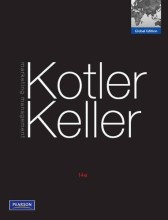Summary: Biopsychology | 9780205030996 | John P J Pinel
- This + 400k other summaries
- A unique study and practice tool
- Never study anything twice again
- Get the grades you hope for
- 100% sure, 100% understanding
Read the summary and the most important questions on Biopsychology | 9780205030996 | John P. J. Pinel
-
3 Neural conduction and Synaptic Transmission
-
3.1 General Layout of the Nervous System
This is a preview. There are 2 more flashcards available for chapter 3.1
Show more cards here -
What two divisions is the Nervous System divided into and what are their functions?
Central Nervous System: Divided into the brain and spinal cord.
Peripheral Nervous System: Divided into the somatic and autonomic nervous system. The somatic nervous system reacts with the environment and is controllable, and can be divided into two categories: Afferent and Efferent nerves. The autonomic nervous system is automatic without our will, this can also be divided into Afferent and Efferent nerves, whereas Efferent nerves can be divided into the Sympathic and Parasympathic nervous system.
-
What is the difference between parasympathetic and sympathetic system?
Sympathetic nerves stimulate in threatening situations and arousal, it needs energy and parasympathetic nerves act to conserve energy, and is used for 'relaxing' situations.
-
By which membrane proteins (meninges) is the brain protected?
From outer to inner:
1. Dura Mater
2. Arachnoid Membrane
3. Subarachnoid Space; large blood vessels and CSF.
4. Pia Mater; adheres ot the surface of the CNS
-
Of what is the single reservois containing the cerebral ventricles composed?
Composed of four ventricles; two lateral ventricles, the third and the fourth ventricle. Furthermore there is a central canal, cerebral aquaduct and the subarachnoid space
-
What is the function of CSF (Cerebrospinal fluid)?
To support, protect and cushion the brain and to dispose waste from the brains into the vasculair circulation
-
Where does excessive CSF go to?
Into large blood filled spaces, also called; dural sinuses.
-
How originates a waterhead?
The flow of CSF is blocked by a tumor near , for example, the cerebral aquaduct. CSF builds up in the ventricles which causes the walls to expand.
-
Explain the Blood Brain Barrier
The Blood Brain Barriers exists of a special structure of cerebral blood vessels. On contrary to other blood vessels, nutrients cannot readily diffuse from the blood into the brain; thereby protecting the brain against toxins. Glucose is actively transported across the BBB.
-
3.2.2 Glial Cells: forgotten cells
This is a preview. There are 4 more flashcards available for chapter 3.2.2
Show more cards here -
What is the function of Schwann cells?
The same as oligodendrocytes, only Schwann Cells have just one segment to generate myelin sheaths. Schwann Cells can regenerate axon growth after damage. Schwann Cells are active in the PNS.
-
3.5 Five Major Divisions of the Brain
This is a preview. There are 2 more flashcards available for chapter 3.5
Show more cards here -
Which two parts of the embryonic brain have developed into two sections at birth?
The forebrain and the hindbrain
- Higher grades + faster learning
- Never study anything twice
- 100% sure, 100% understanding
Topics related to Summary: Biopsychology
-
Mechanisms of Perception: Hearing, Touch, Smell, Taste and Attention - Principles of Sensory System Organization
-
Mechanisms of Perception: Hearing, Touch, Smell, Taste and Attention - Auditory System
-
Mechanisms of Perception: Hearing, Touch, Smell, Taste and Attention - Somatosensory System: Touch and Pain
-
Mechanisms of Perception: Hearing, Touch, Smell, Taste and Attention - Chemical Senses: Smell and Taste
-
Mechanisms of Perception: Hearing, Touch, Smell, Taste and Attention - Selective Attention
-
Mechanisms of Perception: Hearing, Touch, Smell, Taste and Attention - Cortical Mechanisms of Vision and Conscious Awareness
-
Development of the Nervous System - Phases of Neurodevelopment
-
Development of the Nervous System - Postnatal Cerebral Development in HUman Infants
-
Brain Damage and Neuroplasticity
-
Hunger, Eating and Health
-
Hormones and Sex - Neuroendocrine System
-
Hormones and Sex - Hormones and Sexual Development of the Body
-
Sleep, Dreaming, and Circadian Rhythms
-
Biopsychology of Emotion, Stress, and Health
-
Biopsychology of Psychiatric Disorders
-
Autonoom Zenuwstelser

































